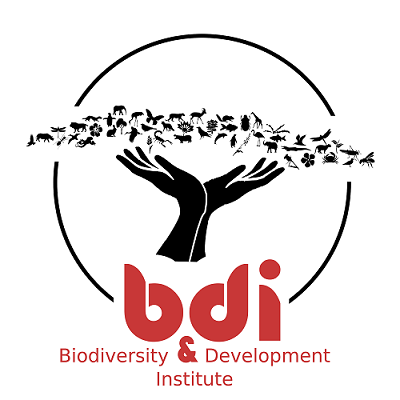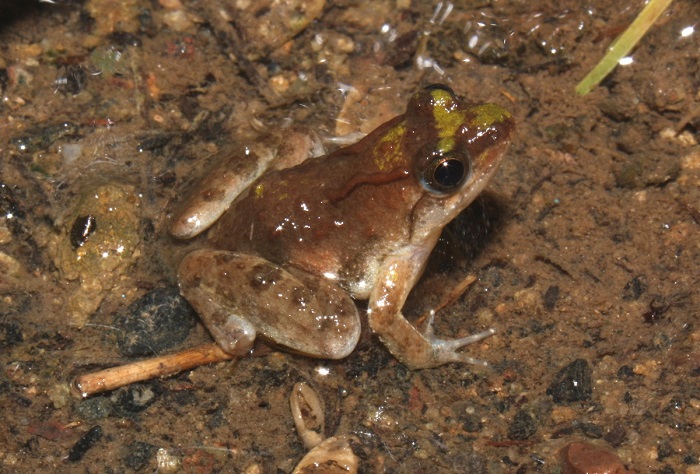View the above photo record (by Luke Verburgt) in FrogMAP here.
Find the East African Puddle Frog in the FBIS database (Freshwater Biodiversity Information System) here.
Family Phrynobatrachidae
EAST AFRICAN PUDDLE FROG – Phrynobatrachus acridoides
(Cope, 1867)
Habitat
P. acridoides inhabits forest and wooded savanna, breeding in pans, ditches and flooded grassy depressions, often in sandy areas (Stewart 1967). It has been found at altitudes below 200 m on the northern coastal plain of KwaZulu-Natal. This area receives annual rainfall of 750–1000 mm.
Behaviour
Little is known of the life history of this frog. Breeding takes place in summer (January–May in Malawi). The males call from shallow water or damp mud, often concealed under vegetation. The eggs are small and dark and form a small mat just below the surface of the water (Channing 2001).
In East Africa, beetles form an important part of this species’ diet (Barbour and Loveridge 1928), while predators include the sand snake Psammophis s. sibilans and Oates’ Savanna Vine Snake Thelotornis capensis oatesii (Loveridge 1953a).
Status and Conservation
Although rare in the atlas region, this species is widespread further north and in no need of any special conservation action. However, because of the importance of protecting the full spectrum of biodiversity in our region, additional surveys should be undertaken in the northeast to determine the actual status and distribution of this frog within the atlas region.
Distribution
P. acridoides is widespread in eastern and southern Africa, ranging from southern Ethiopia and Somalia southward through eastern Kenya, Tanzania, Zambia, Malawi, Mozambique and eastern Zimbabwe, just reaching the northeastern parts of South Africa. Within the atlas region, there are several historical records from the coastal plain of KwaZulu-Natal near the Mozambique border. The call of this species is similar to that of P. natalensis, and recordings should be made for sonagraphic analysis to confirm identifications based on vocalizations.
No confirmed records were obtained during the atlas period. A record from Tzaneen (2330CC) requires confirmation and is not shown on the distribution map. Although pre-atlas data plotted on the map are reliable, the true extent of this species’ distribution in the atlas region is not known.

Further Resources
Virtual Museum (FrogMAP > Search VM > By Scientific or Common Name)
More common names: Oostelike Modderpadda (Afrikaans)
Recommended citation format for this species text:
Channing A, Tippett RM. East African Puddle Frog Phrynobatrachus acridoides. BDI, Cape Town.
Available online at http://thebdi.org/2022/02/05/east-african-puddle-frog-phrynobatrachus-acridoides/
Recommended citation format:
This species text has been updated and expanded from the text in the
2004 frog atlas. The reference to the text and the book are as follows:
Channing A 2004 Phrynobatrachus acridoides East African Puddle Frog. In Minter LR
et al 2004.
Minter LR, Burger M, Harrison JA, Braack HH, Bishop PJ, Kloepfer D (eds)
2004. Atlas and Red Data Book of the Frogs of South Africa, Lesotho and
Swaziland. Smithsonian Institution, Washington, and Avian Demography
Unit, Cape Town.

